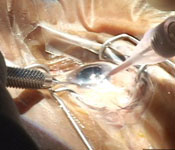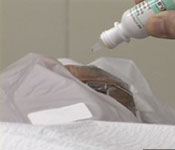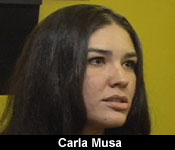
 Cataracts are among the leading causes of blindness in Belize and a visiting eye specialist from the United states says the cataracts he's seen in Belize are the toughest and most difficult to remove he's ever encountered.
Cataracts are among the leading causes of blindness in Belize and a visiting eye specialist from the United states says the cataracts he's seen in Belize are the toughest and most difficult to remove he's ever encountered.
We found Dr. George Pronesti and Dr. Don Sivick in action at the BCVI clinic today where they were taking out cataracts - with great difficulty. Here's the story.
Jules Vasquez Reporting:
Dr. George Pronesti from Philadelphia does about 15 surgeries a day for his four days in Belize. He says the cataracts he encounters here are nothing like the ones back home.
Dr. George Pronesti - Ophthalmologist
 "The cataracts here are generally worse than the ones that we in the United States because we take them out earlier, and when you take them out earlier, they're a bit softer - they're a bit easier to do. Here they're in for a long time; people don't have the same access to the care, so by the time we get them, they're very hard. And a harder lense is much more difficult to remove. Cataracts take a long time to get the the stage that we're seeing them. They go through stages from 1 to 4, and many of these are 4+; they're beyond 4. And it takes years to get to 4."
"The cataracts here are generally worse than the ones that we in the United States because we take them out earlier, and when you take them out earlier, they're a bit softer - they're a bit easier to do. Here they're in for a long time; people don't have the same access to the care, so by the time we get them, they're very hard. And a harder lense is much more difficult to remove. Cataracts take a long time to get the the stage that we're seeing them. They go through stages from 1 to 4, and many of these are 4+; they're beyond 4. And it takes years to get to 4."
Carla Musa - Public relations, BCVI
 "I think a lot of people just brush it off, and you still somewhat see, or you're afraid to access the treatment. You're afraid of surgery, and people don't come in and get the treatment. They don't realize how easy it actually is."
"I think a lot of people just brush it off, and you still somewhat see, or you're afraid to access the treatment. You're afraid of surgery, and people don't come in and get the treatment. They don't realize how easy it actually is."
So easy that the procedure is wrapped up in a few minutes:
Dr. George Pronesti - Ophthalmologist
"Surgery in our facility takes about 4 minutes. I think my kids timed me one time when we were in there. The best I've done is 3 minutes and 9 seconds. So it's a very quick procedure. Here, It's averaging 15 to 20 minutes."
And those longer, more difficult surgeries are benefitting this doctor.
Dr. George Pronesti - Ophthalmologist
"Seeing 15 in a row is going to make me better doing surgery, but the anology I use is like a baseball batter. I'm swinging like 8 bats before I get up to the plates; by the time a get to the plate, the bat seems very light to me. So when I get home, I'm going to be swinging a light bat, no problem."
And while he gets practice in extreme cases, for patients, the reward is, vision:
Carla Musa - Public relations, BCVI
"In most cases, we can definitely see an improvement in the patient's vision the day after the surgery. I will not be 100%, but as we had with a case yesterday with a husband and wife, the lady had not seen her daughter in 2 years, and had her patch removed, had her glasses removed, and she saw her daughter for the first time. So it's as immediate as that. There are occasions where there is some swelling, and some blurriness to the vison, but it's generally the day after, you can notice the results."
But with early detection, most can avoid losing sight completely; so here's what to look for:
Dr. George Pronesti - Ophthalmologist
"Blurry vision, difficulty seeing at night, halos and starbursts around lights, lights bothering your eyes, just lights shining in your eyes making it more difficult to see. Those are the kind of things you look for. If it's blurry at all, come and see someone. It's much better to get seen earlier than to wait until you're blind. If you wait until you're blind, it's a very difficult complicated surgery to do. If you do it earlier, it's actually very simple."
Carla Musa - Public relations, BCVI
"There are thousands of Belizeans who can definitely benefit from these treatments. And it's not just cataracts; that's one of the leading causes of blindness, but we also have glaucoma; we have diabetic retinopathy. And I think the main concern from a BCVI perspective is prevention; the earlier you come in, the earlier you get your eyes tested, the earlier you're diagnosed, the easier it is to treat."
The medical team got supplies donated for all the procedures. They wrap up on Thursday.
| 
